Normally, when it comes to routers with built-in ADSL/VDSL modems, your options are limited, so it’s nice to see TP-Link bring its top model, the Archer VR2800, to UK buyers. The TP-Link Archer VR2800 is ADSL2+ and VDSL2 enabled so you can toss out your BT, Sky, TalkTalk, EE or PlusNet router. It also supports the currently fastest wireless protocol, 802.11ac Wave 2. In short, this is a fast, practical DSL router and an excellent upgrade from the router provided by your current ISP.
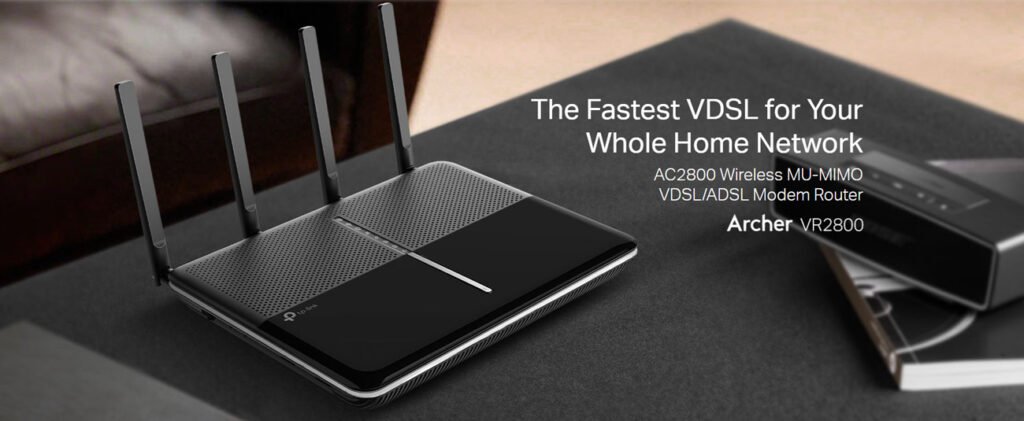
TP-Link Archer VR2800 Pros and Cons
TP-Link Archer VR2800 Design
The TP-Link Archer V2800 features some highly practical connections and inputs, particularly for a DSL Wi-Fi router. On its left, there are two toggle switches for WPS and Wi-Fi services, as well as two USB 3.0 ports to attach storage devices. The rear features four slots for installing the four included dual-band antennas; these are actually adjustable, though I found vertical placement yielded better results. In addition, a dedicated power switch, a reset button that slides in to avoid accidental presses, four Gigabit Ethernet ports, and a DSL input port are also present. The fourth Ethernet port can also be used as a WAN port if you were to plug in an existing modem for lines that don’t use DSL (cable lines primarily). A row of fairly bright status LEDs sits centrally on the router’s body, though thankfully these can be switched off. This proves handy if you wish to place the router in a bedroom.
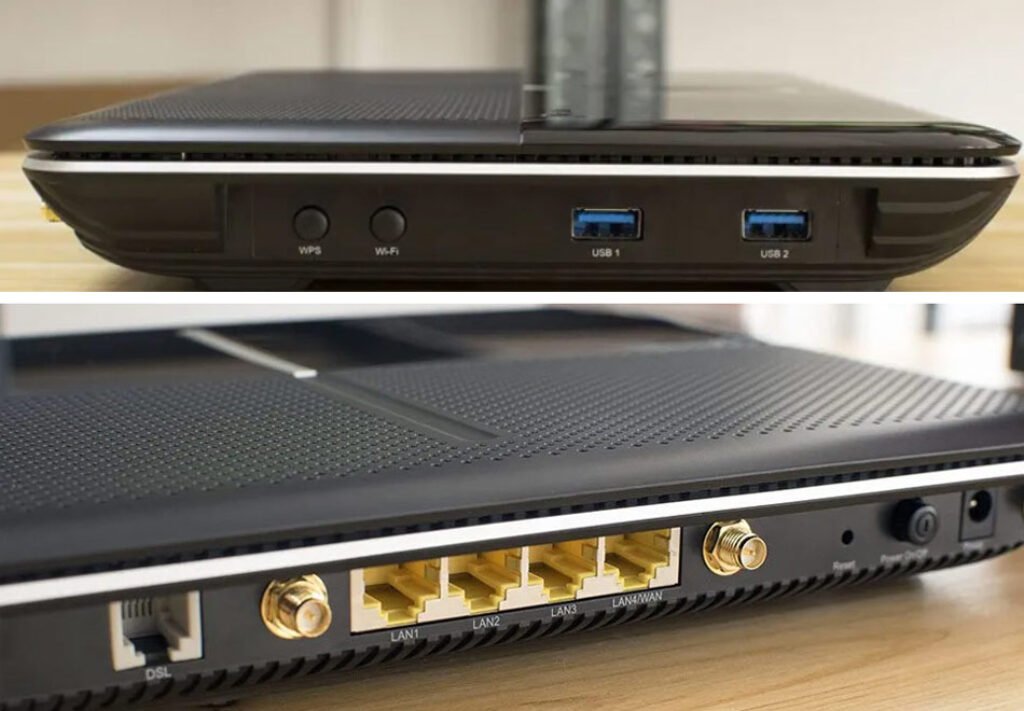
The Archer V2800 is designed with contour cutouts on the back for wall mounting, when shelf or desk space is at a premium. The serial number, power information, and default connection information are contained in the middle white sticker label, which makes it easier to use the device on your network. As for extras, presumably most electronics are built-in to the unit but we do get four dual-band Wi-Fi antennas, a DSL connection cable, a split, a power adapter, and an Ethernet cable. That is everything that you need for the TP-Link Archer VR2800 to be ready to go out of the box.
Although the VR2800 may not be as sleeker as TP-Link’s C9 or as space age as the Nighthawk series routers, I actually really like the VR2800’s minimal, modern design. If you’re after a very up-to-date DSL modem wi-fi router, then the Archer VR2800 is a pretty good option.
TP-Link Archer VR2800 Feature
- This VDSL Modem Router – The Archer VR2800 operates at 2167 Mbps on 5 GHz and 600 Mbps on 2.4 GHz
- Wave 2 802.11 ac – The latest Wi-Fi technology Wi-Fi has just gotten faster Mu Mimo technology for multiple users
- 802.11 ac Wave 2 – The latest Wi-Fi standard incorporates MU-MIMO
- Dual-core CPU – 1 GHz dual-core CPU and two co-processors facilitate seamless multitasking and enhance data transfer rates.
- Four removable external dual-band antennas; 0°C to 40°C operating temperature
- Compatible with VDSL2, ADSL2+, ADSL2 and ADSL
- TP-Link Tether App – With the TP-Link Tether app, you can easily manage your Archer VR2800 from any Android or iOS device.
TP-Link Archer VR2800 Specifications
| Brand | TP-Link |
| Model name | Archer VR2800 |
| Special feature | WPS |
| Frequency band class | Dual-Band |
| IEEE Standards | IEEE 802.3, IEEE 802.3u, 802.3ab |
| ADSL Standards | Full-rate ANSI T1.413 Issue 2, ITU-T G.992.1(G.DMT), ITU-T G.992.2(G.Lite), ITU-T G.994.1 (G.hs) |
| Wireless communication standard | 2.4 GHz Radio Frequency, 5 GHz Radio Frequency, 802.11ac |
| Compatible devices | Computers (Laptop, Desktop), Mobile Devices (Smartphones, Tablets), Other Wi-Fi or Ethernet Devices |
| Antenna | 4 external detachable dual band antennas (RP-SMA) |
| Button | WPS Button, Wi-Fi Button, Reset Button, LED On/Off Button, Power On/Off Button |
| Dimensions ( W x D x H ) | 10.4 × 7.8 × 1.5 in (263.8 × 197.8 × 37.3 mm) |
| Package Content | AC2800 Wireless MU-MIMO VDSL/ADSL Modem Router Archer VR2800 External Splitter RJ11 DSL Cable RJ45 Ethernet Cable Power Adapter Quick Installation Guide |
TP-Link Archer VR2800 Performance
On the 5GHz band, thanks to 4×4 stream MIMO and 1024QAM support, the TP-Link Archer VR2800 achieves speeds of up to 2167Mbps. The 2.4GHz band performance is a bit underwhelming, though we still had compatible adapters/devices achieve speeds of up to 600Mbps.
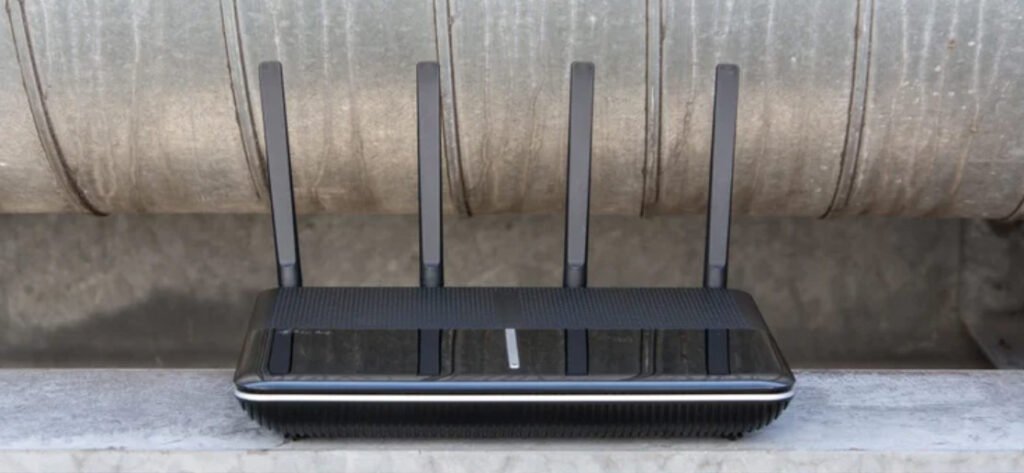
At close range we saw download throughput of 109MB/s (872Mbits/s), which is as fast as Gigabit Ethernet, and the fastest close range speed of all the routers we’ve tested. Our long-range kitchen results were less convincing, but still average at 10.8MB/s for downloads. Although it’s not as fast as mesh systems such as Google Wifi or BT Whole Home Wi-Fi at long range, it’s good for most broadband needs in most parts of your house – even if you have the best 74Mbps broadband from BT.
USB transfers were also on the high side: The USB 3.0 read speed reached a very good 41.8MB/s, which should be enough for the likes of casual file sharing and occasional backup duty.
TP-Link Archer VR2800 Setup
Configuring the DSL connection is remarkably straightforward: simply run the router’s quick setup wizard, select your provider from the list – which includes all major UK ISPs, including Sky VDSL (MER) – enter your username and password, and the router handles the rest.
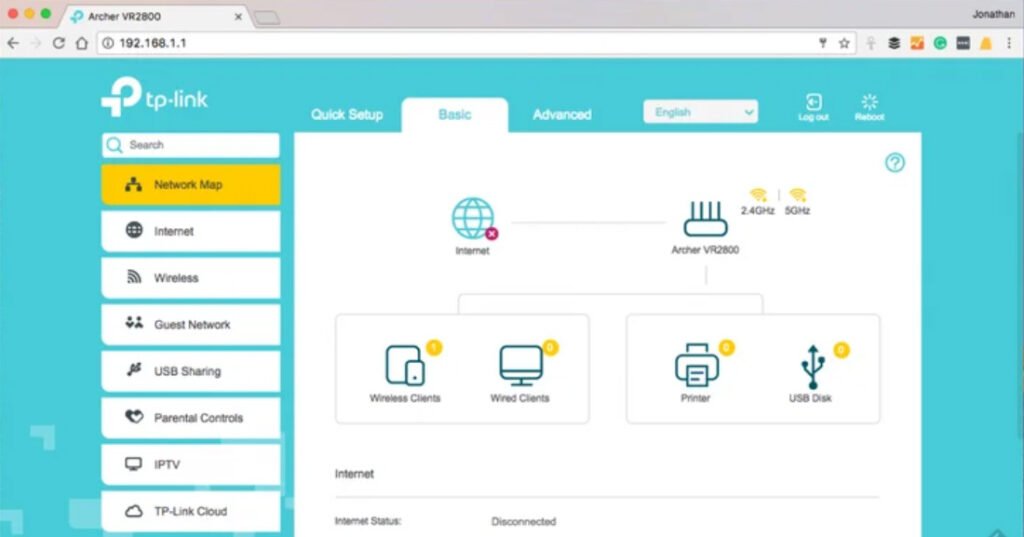
As Sky officially does not support third-party routers, Sky users must overcome some technical hurdles to obtain credentials. Specifically, you’ll need to use Wireshark to “crack” your username and password; however, when I tested the router at home with Wireshark, it functioned flawlessly.
TP-Link Archer VR2800 Firmware
TP-Link’s Tether app (available for both iOS and Android) is excellent. It provides access to most functions of the router’s web management page, including firmware updates and parental controls. These parental control features are genuinely useful. It features whitelists and blacklists to permit/restrict access to specific websites, plus controls for device access during particular dates and times. This is precisely what parents require and what we’d expect to see.
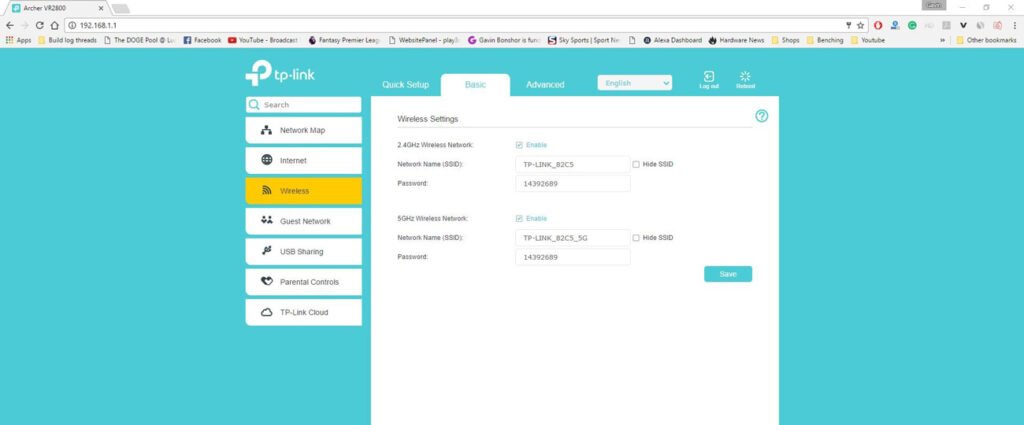
Additionally, the USB port can connect 4G adapters, printers, and storage devices. It supports user-configurable QoS, allowing allocation based on device or application. Setting up a guest network is straightforward, and the router supports OpenVPN.


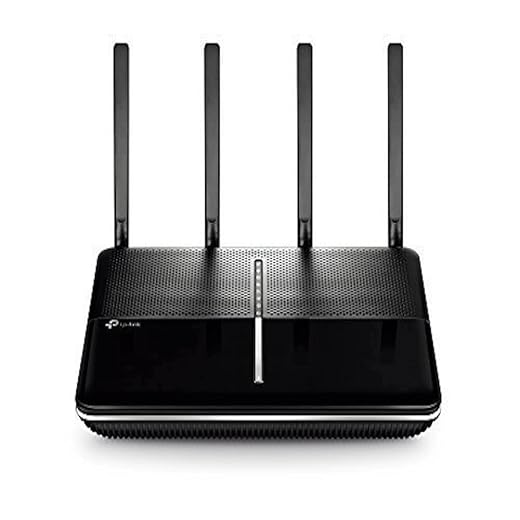

 Amazon.co.uk
Amazon.co.uk 

